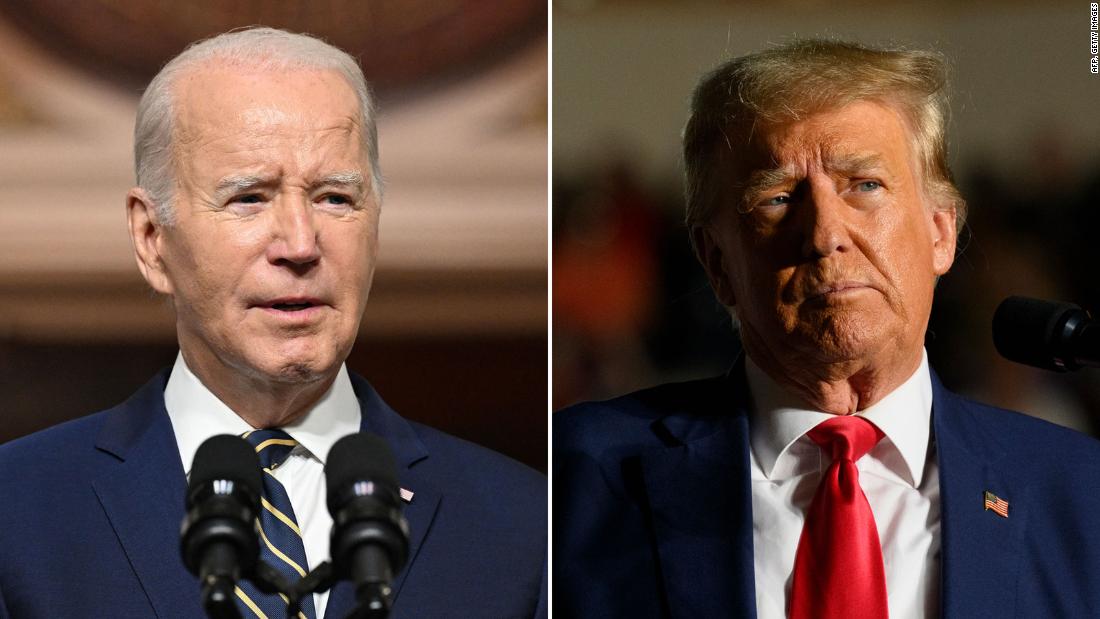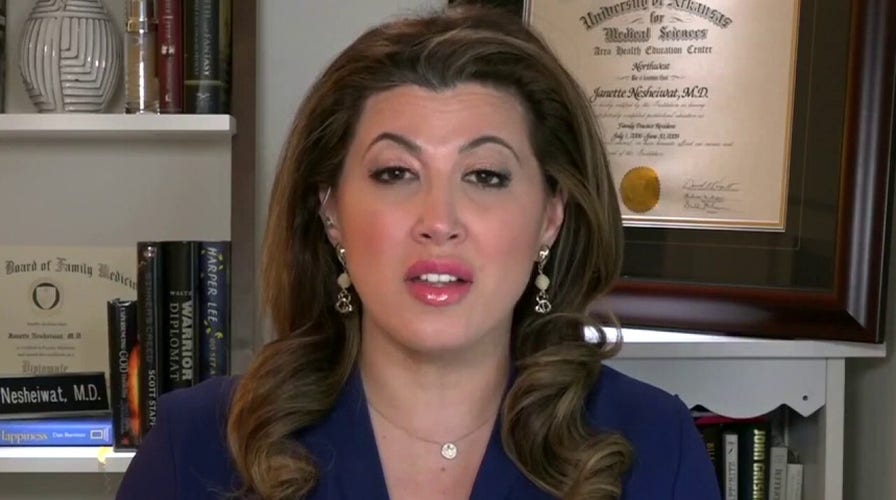- by foxnews
- 26 Nov 2024
Even Trump's indictments haven't shattered the deadlock between the parties. Here's why

Former President Donald Trump's mounting legal jeopardy is raising a stark political question: can anything break the sustained electoral stalemate that has left the country divided almost exactly in half between the Republican and Democratic coalitions?
Trump was indicted for a third time on Tuesday and is facing a swarm of criminal accusations unprecedented for an active presidential candidate, much less a former president. But during this ordeal, his lead in the 2024 GOP presidential primary has solidified. And while polls have highlighted some clear warning signs for him as a general election nominee, mostly they point to another closely fought contest, with President Joe Biden usually holding a small overall lead and a tiny handful of precariously balanced swing states likely to decide the outcome. A New York Times/Siena College poll released on Tuesday, however, found Trump and Biden tied in a hypothetical matchup at 43 percent.
Several big dynamics are converging, including a slowdown in inflation and acceleration of Trump's legal troubles, that could provide Democrats a tailwind next year, particularly in the presidential race. But all of these forces face the immovable object of the entrenched demographic and geographic divisions that have produced one of the longest periods in American history in which neither party has been able to establish a durable or decisive advantage over the other.
The parties now represent coalitions with such divergent visions of America's future, particularly whether it welcomes or resists racial and cultural change, that it's unclear what could allow one side to break out from the close competition between them. And that includes the prospect of Republicans choosing a presidential nominee who could be shuttling between the campaign trail and the courtroom.
"The two political parties are farther apart on average than they have been in our lifetime," said Lynn Vavreck, a UCLA political scientist and co-author of books on the 2016 and 2020 elections. "That makes it harder for people to think about crossing over to the other side."
Democrats have won the popular vote in seven of the past eight presidential elections - something no party has done since the formation of the modern party system in 1828. That suggests the Democratic coalition, on a national basis, is somewhat larger than the GOP's.
But the Democrats' difficulty competing outside of large metropolitan areas, as well as the small state bias in the Senate and the Electoral College, has allowed the GOP to remain highly competitive in this era. In almost every critical dimension, the political system is now defined by stasis and stand-off. In this century, for instance, majorities for either side in the House and Senate have consistently been much smaller than they were in the late 20th century. Each party has now established a virtually impregnable sphere of influence across a large number of states in which they dominate elections up and down the ballot-from the presidential contest through Congress and state races. Forty of the 50 states, or 80% of them, have voted the same way in each of the past four presidential elections; that's a higher percentage of states than voted the same way even in the four consecutive elections won by Franklin Roosevelt from 1932 through 1944.
The latest measure of this deadlock came last week in a joint survey by Tony Fabrizio and John Anzalone, the lead pollsters in 2020 respectively for Trump and Biden. In a study for AARP, the giant advocacy group for older Americans, the two surveyed attitudes in the 40 congressional districts considered the most competitive by the non-partisan Cook Political Report.
The results pointed to an electoral competition in which the concrete has settled very firmly. The poll found voters divided exactly in half over whether they intended to vote for Democrats or Republicans in the next Congressional election. And it found Biden leading Trump by four percentage points across these 40 districts: that was exactly Biden's advantage over Trump in these seats in 2020.
The Anzalone/Fabrizio poll for AARP is just one poll, of course, but it's consistent with the broad current of recent public opinion surveys. While surveys now usually show Biden leading Trump, the president's margin rarely exceeds his four-point margin of victory from 2020. The latest national NBC poll, conducted by another bipartisan team of prominent Republican and Democratic pollsters, also found Biden leading Trump by the exact same four percentage point margin he amassed in 2020.
Bill McInturff, the lead GOP pollster on the survey, points out that in the poll Trump led 93%-1% among those who voted for him in 2020, while Biden led 93%-3% among his 2020 supporters. "The two partisan coalitions are locked down and difficult to move," McInturff said. Unexpected changes in the electorate's composition - for instance whether youth turnout is higher or lower than anticipated - would be more likely to change the outcome in a rematch than movement toward or away from each man among the key voter groups, McInturff believes.
Vavreck, the UCLA political scientist, and her co-authors John Sides and Chris Tausanovitch, argue in The Bitter End, their book on the 2020 election, that American politics is likely to remain this closely balanced for years. The reason, they believe, is that voters are now choosing between the parties primarily on their views about changes in America's fundamental identity, rather than their assessment of current conditions, or even differences in economic and foreign policy priorities. And on those identity-focused issues - from abortion to LGBTQ rights - the chasm between the parties has grown so large that very few voters can envision switching sides, even to register a protest over the country's immediate direction.
"Maybe in the 1980s," Vavreck said, voters could "give the other side a go" when they were disenchanted with the incumbent president's performance "because they weren't that far apart on those [identity] issues." But now, she adds, the gulf between the parties on cultural and racial issues is so great and "are central to the kind of society and community that people want to live in, that you can't cross over because you think, say, that interest rates are too high. Because if you put the other side in, they are going to build a world you don't want to live in, even if you can buy a house."
Vavreck said nothing demonstrates the durability of this political alignment more than the political impact of the COVID pandemic, or lack thereof. In the early 2000s, she notes, political analysts might have predicted that an event so disruptive might have rearranged the public into new allegiances, as other momentous events like the Great Depression did. Instead, the pandemic quickly evolved into just another front in the preexisting culture war lines of division between the parties. "It became politicized and subsumed by this existing dimension of conflict about identity things very quickly," she said.
Much the same may be happening with Trump's cascading legal troubles. A detailed national poll released last week by Bright Line Watch, a collaborative of political scientists studying threats to American democracy, found these momentous developments also slotting almost entirely into the existing partisan divide.
In that survey, just one-fourth of Republicans said Trump had committed a crime in his handling of classified documents, while only about half that many Republicans believe he broke the law on January 6 or in his broader effort to overturn the 2020 result. Only about one-in-six Republicans thought he committed a crime in paying hush money to adult film star Stormy Daniels during the 2016 campaign. The vast majority of Republicans said the prosecutors were singling out Trump for charges they would not bring against other defendants and fully three-fifths of GOP partisans said they now consider the January 6 riot to be "legitimate protest." The vast majority of Democrats, by contrast, took the opposite position on all those questions.
The best news for Trump in the Bright Line Watch survey was that on each specific issue around which he's facing a criminal investigation, fewer than half of independents believed he has committed a crime. In a less specific question, a NPR/PBS NewsHour/Marist poll released Sunday found that only about half of independents agreed that he has "done something illegal" in any of the conduct that prosecutors are investigating.
But these findings may understate the potential risk to Trump if the cases against him move to trial before the November 2024 election. An earlier NPR/PBS NewsHour/Marist poll found that while a substantial majority of Republicans said they would like to see a second Trump term even if he's convicted of a crime, three-fourths of independents said they would not want him returned to the White House under those circumstances. So did about three-fourths of adults younger than 45 and people of color and a resounding four-fifths of college-educated White voters.
Anzalone said the survey he conducted with Fabrizio across the 40 most competitive Congressional districts showed that Trump's behavior was already suppressing his support. (Fabrizio was not available for comment on the poll.) Strikingly, voters across those districts gave Trump a notably higher approval rating for his time in office (49%) than they now give to Biden (just 43%). Yet Biden, as noted above, still maintained his 2020 lead over Trump in these seats of four percentage points.
"You can see [Trump] underperforms his job rating and that's because there are people who may like his agenda but do not want to go back to the chaos," Anzalone said. "There is a chaos factor here, a behavior factor, a concern that he might actually go to prison."
The possible public reaction to Trump's indictments is one of several emerging dynamics that could tilt, if not shatter, the balance of power between the parties through the 2024 election. On balance, many Democrats are confident these factors are more likely to strengthen Biden than the eventual GOP nominee, especially if it's Trump.
Simon Rosenberg, the long-time Democratic strategist who was proven right as the most prominent public skeptic of the "red wave" theory in 2022, argues that Trump, in particular, is unlikely to match his 47% of the vote from 2020 if the GOP nominates him again. "We are starting at a place where it is far more likely in my mind that he gets to 45% than he gets to 49%," Rosenberg said. "And if he gets to 45%, we have the opportunity to get up to 55%. The key for Democrats is we have to imagine growing and expanding our coalition for it to happen."
Beyond the personal doubts about Trump among voters outside the GOP coalition, Democrats such as Rosenberg and Anzalone see several other factors that give Biden a chance to widen his winning margin from the last election. Perhaps the most important of those are the slowdown in inflation, continued strength of the job market, and signs of accelerating recovery in the stock market - all of which are already stirring some gains in consumer confidence. Democrats are encouraged as well by recent declines in the number of undocumented immigrants attempting to cross the Southern border and the crime rate in big cities - two issues on which polls show substantial disappointment in Biden's performance.
Another change since 2020 is the broad public backlash, especially in Democratic-leaning and swing states, against the 2022 Supreme Court decision ending the constitutional right to abortion, which Trump has directly claimed credit for engineering through his nominations to the court. Finally, compared to 2020, the electorate in 2024 will likely include significantly more young people in Generation Z, a group that is preponderantly supporting Democrats, and fewer Whites without a college degree, now the GOP's best group.
All of these factors, Rosenberg said, create "an opportunity" for Democrats to amass a bigger majority next year than most consider possible. But to get there, he argues, the party will need to think bigger, particularly in its efforts to mobilize younger voters aging into the electorate. "It's a man on the moon kind of mindset," Rosenberg said. "We have to want to go there to get there. We have to build a strategy to take away political real estate from the Republicans because they are giving us the opportunity to take it away from them."
Many Republican strategists privately agree that the combined effect of the January 6 insurrection and the court's abortion decision will make it difficult for Trump to expand his support from 2020 if the GOP nominates him again. But they note that the fact that Trump has stayed so close to Biden in the polls, despite all his difficulties, shows how reluctant voters are to reelect the sitting president to a second term.
Surveys have found widespread concern among voters that Biden is too old to effectively handle the presidency. And, despite the improving financial news, surveys continue to show pervasive disenchantment with his economic performance: the Fabrizio/Anazlone poll, for instance, found voters in those competitive districts preferred the GOP over Democrats on the economy and inflation by imposing margins of nearly 20 percentage points. If a third party siphons away voters negative about both Trump and Biden, or turnout sags among young voters unenthusiastic about the President, some Republicans see a path for Trump to win even if he cannot expand his vote from 2020.
Anzalone, though, said that in the few swing states that will decide 2024, Democrats can cut into the GOP's economic advantage with paid advertising making voters more aware of Biden's accomplishments on key economic issues, including his success at promoting private investment into clean energy and other manufacturing facilities, the measures he's passed to lower drug prices, and his push for federal aid that would allow more seniors to live independently at home - an idea the AARP poll shows is very popular among older Americans. Rosenberg notes that in those few key swing states - including Arizona, Georgia, Michigan, Pennsylvania and Wisconsin - Democrats ran unexpectedly well in 2022, as an unusually large number of voters dissatisfied with the economy or down on Biden still voted for the party anyway because they considered the GOP alternative too extreme.
It's another question though whether any of these factors might provide Biden a big enough cushion to breathe easy at any point, even if the GOP nominates Trump while he is ensnared in multiple criminal proceedings. "Your best bet on what the election polling is going to look like in 'x' number of months," said Vavreck, "is the same as what it looks like today."
Still, McInturff predicts that a Biden-Trump rematch could generate unexpected twists, not because it splits the electorate in new ways, but because so many voters are unenthusiastic about both men. "Actually, the Biden/Trump rerun is more likely to produce surprising results as voters have made clear they do not want to see this rematch," he said.
That reluctance, McInturff maintains, could trigger all sorts of unusual outcomes, such as a lower turnout, or higher than usual support for third-party candidates. But even as indictments accumulate around Trump like snow drifts, the evidence so far suggests one thing another Biden-Trump race may not do is allow either party to break out from the trench warfare that has defined their modern competition.
- by foxnews
- descember 09, 2016
The world's oldest Douglas fir trees have lived over 1,000 years
The Douglas fir, the state tree of Oregon, can grow incredibly tall and live impressively long. The oldest Douglas fir trees have lived to be over 1,000 years old.
read more


